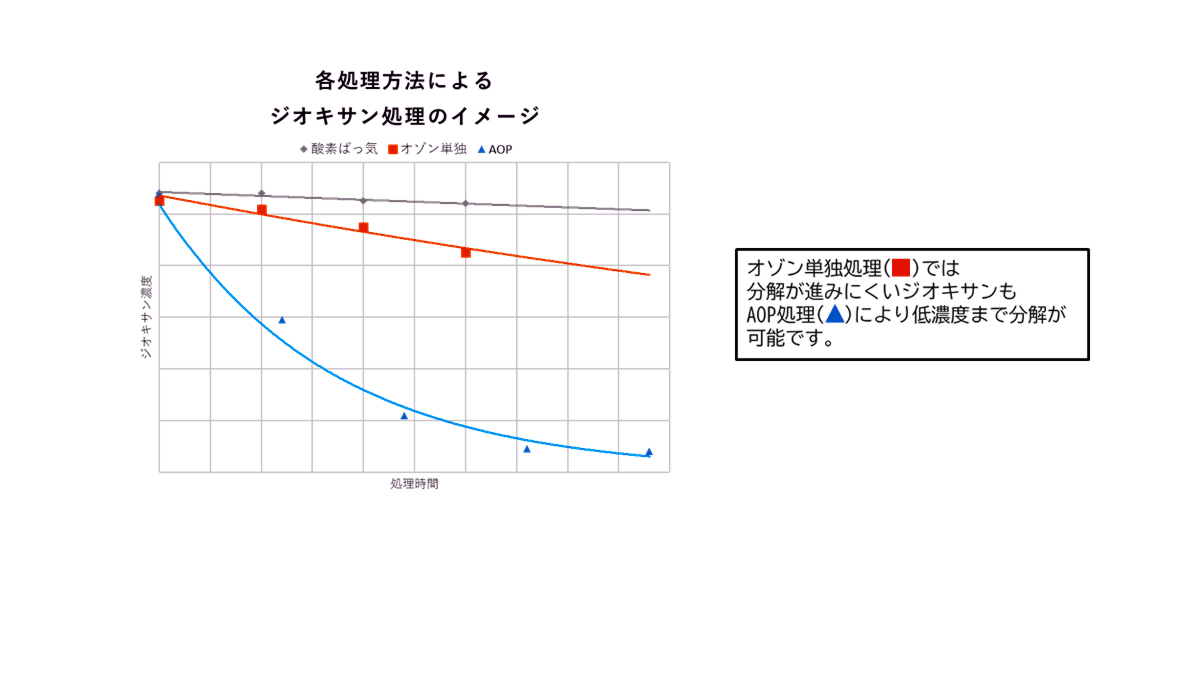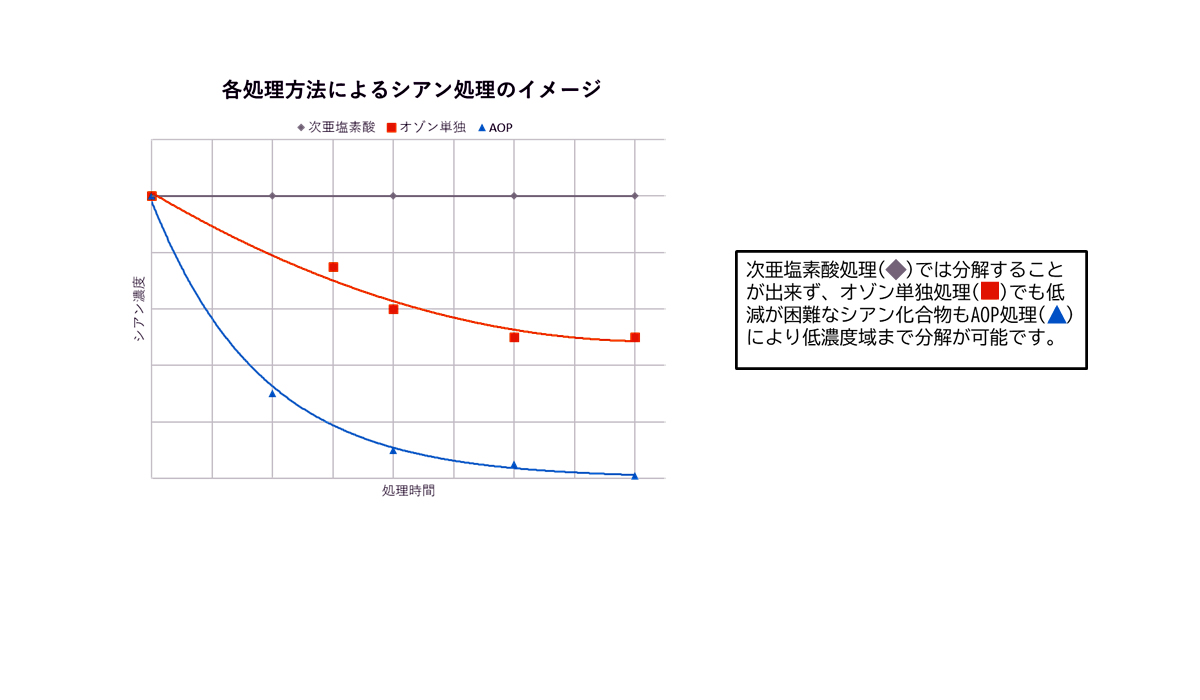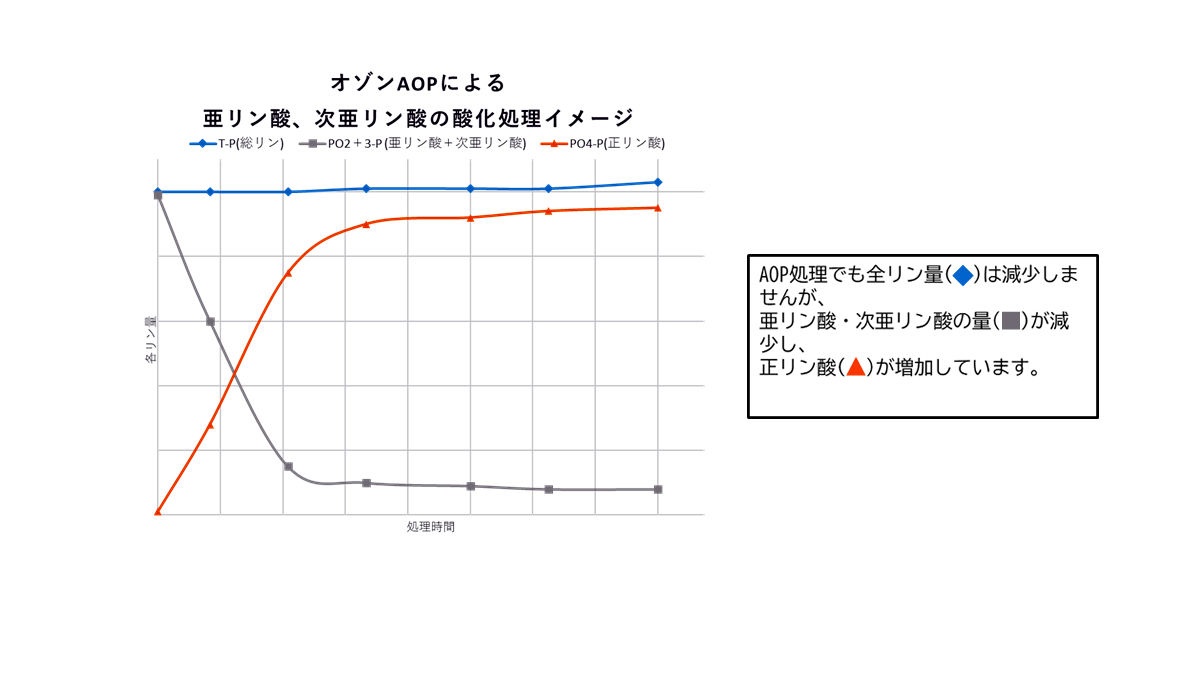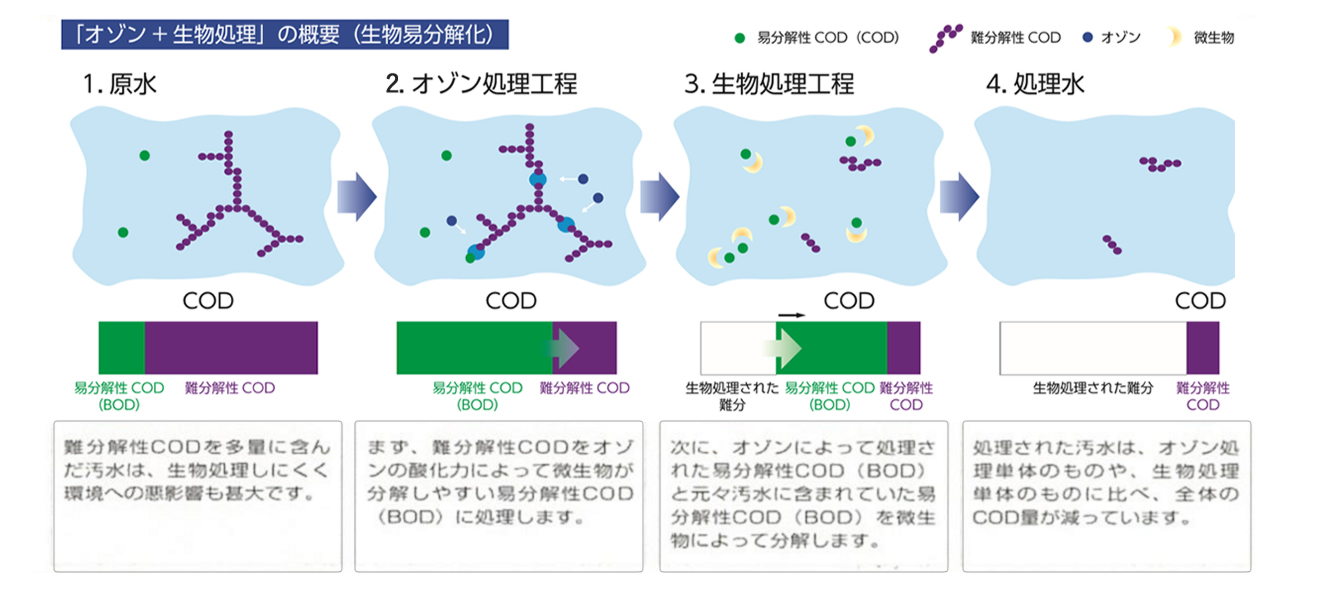wastewater treatment
Wastewater treatment (advanced treatment using ozone)
Precision has a proven track record of delivering ozone/AOP equipment to treat the following substances. Utilizing this track record, we can propose the most appropriate treatment system to suit your needs.
| Treatment material | |
|---|---|
| Dioxins | Decomposition of dioxins contained in leachate from final disposal sites. |
| 1,4-Dioxane | Dioxane decomposition in wastewater. |
| cyanide compounds | Decomposition of cyanide and cyanide compounds in wastewater. |
| Phosphate Modification | Intermediate treatment to recover phosphoric acid from wastewater. |
| antibiotics | Degradation of antibiotics in wastewater |
| Low area COD | Reduces the COD of wastewater to a low level of 30 mg/l or less. |
| phenols | Decomposition of phenol, bisphenol A, etc. in wastewater. |
We will introduce examples of applications of ozone/AOP treatment for each substance.
1,4-dioxane
Dioxane, which is difficult to treat or decompose using ozone alone, can also be treated.
AOP treatment can decompose substances down to low concentrations.
- Example of wastewater containing dioxane
-
Solvents used in organic synthesis, by-products used in the manufacture of ethylene oxide, ethylene glycol, and PET resin, etc.

cyanide compounds
AOP treatment can also decompose persistent cyanide compounds (complex cyanides), which are difficult to reduce using hypochlorous acid or ozone treatment alone, to low concentrations.
- Example of wastewater containing cyanide
-
Plating factory wastewater, photographic development wastewater, coke oven wastewater, etc.

Phosphate treatment
Phosphoric acid (orthophosphoric acid) in wastewater can be recovered as phosphate in subsequent treatment, but if it exists as phosphorous acid or hypophosphorous acid, it is highly soluble and difficult to recover in subsequent treatment.
Phosphorous acid and hypophosphorous acid can be converted into orthophosphoric acid through ozone AOP treatment, which can then be recovered as phosphate in subsequent treatment.

biodegradable
Even for those substances that are difficult to biodegrade and remain even after biological treatment, ozone treatment can make them easily degradable. By performing biological treatment after ozone treatment, it is possible to reduce COD more than biological treatment alone. This allows for advanced COD treatment (total amount control measures, etc.) at low cost.


Ozone can be used to treat substances subject to wastewater regulations, such as those listed in the table below, and is expected to meet wastewater standards. To confirm the effectiveness of wastewater treatment using ozone, we can assist you with the following:
・You will be sent actual water and we will carry out water treatment tests in our company.
・Conducting on-site processing tests using test equipment
・Proposal of processing flow for actual equipment based on test results
If you have any problems with wastewater treatment, please contact us.
Polychlorinated biphenyls
Trichloroethylene
Dichloroethylene
n-Hexane extracts
(Mineral oils/Animal and vegetable oils)
Tetrachloroethylene
benzene
phenols
Dioxins
aniline
Thiobencarb
Shimajin
Dioxane
Dichloromethane
Phosphorescence
Chiraum
cis-1,2-dichloroethylene
Polyethylene glycol
Dichloroethane
Dichloropropene
Trichloroethane
Linear alkylbenzene sulfonic acid and its salts



